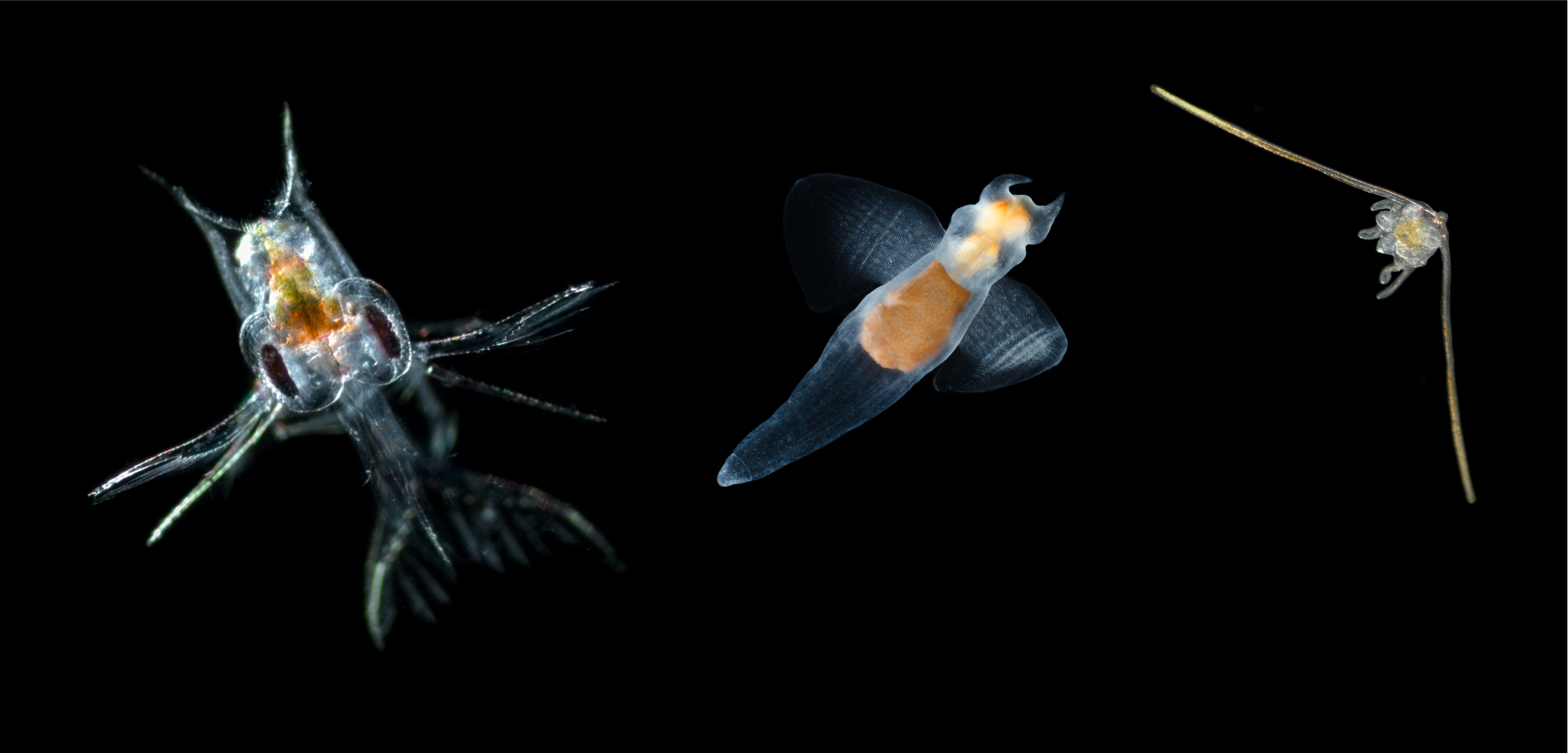Microworlds: Plankton
They can be as big as a jellyfish or as small as a strand of DNA, but what makes them plankton? And how do they survive in a watery world full of creatures that want to eat them? Come with us to experience the ocean like you’ve never seen it before in Season 1 of Microworlds: Plankton.
Microworlds is a YouTube series where we shrink down and discover the wonderful lives of the tiny, the miniature, the microworlds.
Each episode also has a cheat sheet for teachers that identifies concepts in the videos that may be useful in the classroom. And all episodes have closed captioning options in both English and French.
Produced by Josh Silberg and Meigan Henry
Edited by Bennett Whitnell and Kristina Blanchflower
Videography by Bennett Whitnell and Grant Callegari
Voice-over by Kristina Blanchflower
Microscopy/Scientific team: Alana Closs, Noriko Okamoto, Tyrel Froese, Faye Manning, and Kyle Hall
Plankton 101
The watery world of phytoplankton and zooplankton is a daily drama—an ocean teeming with plants and animals. It’s the ocean like you’ve never seen it before.
Teacher cheat sheet of what’s included in Plankton 101:
– What is plankton, the incredible diversity of plankton
– Phytoplankton and zooplankton
– Why are plankton important
– When and where are plankton found in the ocean, life cycles
– Gossamer worms, squat lobster, moon jellyfish
Fiercest Ocean Predators
Plankton stick, sting, sense, and sneak to keep their bellies full. See how these ferocious creatures find food in a vast ocean.
Teacher cheat sheet of what’s included in Fiercest Ocean Predators:
– Plankton, zooplankton
– Capturing and eating food, sensing and responding
– Physical and behavioral adaptations to environments
– Life stages
– Parasitism, parasites and hosts, predators and prey,
– Comb jellies, amphipods, arrow worms, copepods, sea angels (sea slug), sea butterflies (sea snail)
Surviving the Open Ocean
A game of survival with no places to hide. How do plankton defend themselves when getting caught means you pay the ultimate price?
Teacher cheat sheet of what’s included in Fiercest Ocean Predators:
– Plankton, zooplankton, phytoplankton
– Predators and prey
– Defensive strategies (protective structures, taste, camouflage, feeding strategies)
– Physical and behavioral adaptations to the environment
– Light underwater in the deep ocean
– Dinoflagellates, diatoms, porcelain crabs, amphipods, Tomopteris worm
Strangest Eyes in the Ocean
Why have eyes when most of the ocean is so dark? For a variety of unexpected reasons, many plankton have evolved one eye, two eyes, three eyes, or more. And they don’t always stay in one spot.
Teacher cheat sheet of what’s included in Strangest Eyes:
– Different types of eyes (eye spots, compound eyes), evolution of eyes
– Life cycles and stages
– Adaptation to the environment, migration, reproduction
– Barnacles, flatfish, squat lobster, red-eyed medusa jellyfish
Making Babies
There are plenty of fish in the sea, and there are even more plankton. But in a vast ocean, it’s tough for microscopic plankton to find a mate. How do plankton do it?
Teacher cheat sheet of what’s included in Making Babies:
– Plankton, phytoplankton, zooplankton
– Sexual and asexual reproduction; cloning; hermaphrodism; timing; phytoplankton blooms
– Parasitism
– Parental care
– Physical and behavioral adaptations to the environment
– Diatoms, sea squirts (larvacean), bopyrid isopods, copepods, mud shrimps, bristle worms (polychaetes)
Microworlds: Plankton Q&A
Meet the team behind the show, get your questions answered, and hear about our next video series Field Notes.

